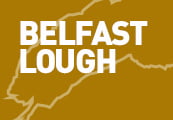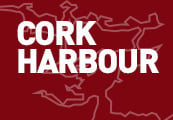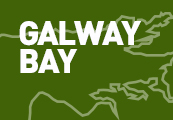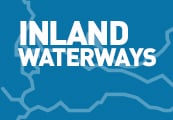Displaying items by tag: Blue Green Algae
Stormont Debates Motion Calling for Action to Save Lough Neagh from ‘Ecological Catastrophe’
Three Sinn Féin MLAs have brought a motion to the newly restored Stormont Assembly for action to save Lough Neagh from its pollution crisis, as The Irish Times reports.
MLA for North Antrim, Philip McGuigan described the situation on the lough as an “ecological catastrophe”.
“The work of saving Lough Neagh and repairing the damage to its ecology and environment and that of its tributaries and surrounding land must be a top priority for the Executive in the time ahead,” he told the Assembly on Tuesday (13 February).
The motion comes on the heels of last summer’s spate of toxic blue-green algae blooms, which caused the deaths of numerous pets and was blamed for the collapse of the lough’s renowned native eel fishery.
Untreated wastewater and agricultural run-off — not to mention climate change, invasive species such as the zebra mussel, and political inaction due to the collapse of the Northern Ireland Executive — have been singled out as reasons behind the current crisis.
The Irish Times has more on the story HERE.
Experts Say Years Before Impact of Toxic Algal Blooms on Lough Neagh is Fully Understood
Warning signage is being removed from locations around Lough Neagh following this past summer’s blooms of toxic blue-green algae.
But as BBC News reports, it could be years before the ecological impact on the lough is fully understood.
Ulster Angling Federation chair Gary Houston claimed that the collapse of the Lough Neagh fly, attributed to the cyanobacteria blooms, has had a knock-on effect on all other species in the area — most notably its native trout and eels.
A spokesperson for the Northern Ireland Environment Agency (NIEA) said the fly species was not previously monitored as it was “commonplace and not a protected feature” but confirmed they are “a key trophic (food) component of the Lough Neagh ecosystem”.
“We’ve been damaging the ecosystem in Lough Neagh now for 60 years or so and we’ve been doing it knowingly for 50 years, but we’ve got away without the acute impacts [until now],” said Dr Adam Mellor of the Agri-Food and Biosciences Institution (AFBI).
All parties acknowledge that the current crisis is the result of multiple factors over decades — including climate change, changes in agriculture and the presence of invasive species — and some believe it could take just as long to turn it around.
BBC News has much more on the story HERE.
Lough Neagh Pollution Crisis is End Result of ‘Decades of Neglect’
Lough Neagh “isn’t just dying, it’s been killed” by a combination of human-made factors, one conservationist has declared as the crisis around toxic blooms of blue-green algae continues.
Speaking to The Irish Times, Friends of the Earth NI director James Orr says the situation “has literally blown people’s trust in the health of the lough out of the water”.
As previously reported on Afloat.ie, the lough — which is the source of nearly half of Northern Ireland’s drinking water — is in crisis due at least in part to the affects of pollution from untreated wastewater and agricultural run-off, as anglers and other groups have claimed.
Similar blooms of cyanobacteria have been recorded across the region, such as on the Lower Bann — which has lost at least one long-standing watersport business to the “unsustainable” situation — and with the latest confirmed at Lough Ross in Crossmaglen.
The issue prompted protestors to hold a ‘wake’ for Lough Neagh last weekend, as others lamented the collapse of the lough’s renowned eel fishery and even the Catholic and Anglican archbishops of Armagh were moved to call for immediate government intervention to help reverse “an environmental disaster”.
In recent days the SDLP has made a renewed bid to recall the Stormont assembly to address the crisis — the lack of a functioning devolved government in Northern Ireland since February 2022 being cited as one of a combination of factors that’s led to the current state of affairs.
Peter Harper of the Lough Neagh Partnership tells The Irish Times that other salient factors include the impact of the invasive Zebra mussel as well as climate change, which has raised the temperature at the bottom of the lough by one degree, in turn contributing to wetter weather that feeds the cycle of pollution from farmland and an overwhelmed sewage system.
“The lough’s in crisis,” says Ciara Laverty of the Lough Neagh Partnership. “The ecology’s changing, unless we do something drastic about it now. Decades of neglect have led us to this point.”
The Irish Times has more on the story HERE.
Northern Ireland Councillors Call for Action Over Toxic Blue-Green Algae Blooms
Causeway Coast and Glens councillors have echoed growing concerns over the state of the aquatic environment following recent blooms of toxic blue-green algae, as the Belfast Telegraph reports.
Alliance Councillor Peter McCully tabled a motion at last week’s Environmental Services Committee Meeting that emphasised the “detrimental impact these blooms have had on local businesses”.
As previously reported on Afloat.ie, at least one long-standing business on the Lower Bann has announced its closure, claiming its future is “unsustainable” given the likelihood of dangerous cyanobacteria blooms happening “on a yearly basis”.
Cllr MuCully said the response from Northern Ireland’s Department for Agriculture, Environment and Rural Affairs (DAERA) to this summer’s incidents is “not sufficient” and his motion calls for DAERA to convene cross-party talks across all affected council areas to develop and action plan.
Lough Neagh has also been affected by toxic blue-green algae blooms in recent months, with angling groups claiming that the lough is “dying” due to the affects of pollution from untreated wastewater and agricultural run-off.
The lough’s eel fishermen have added their voices to the call for action, saying their industry has collapsed this season.
"Never have I seen so many eel fisherman resorting to scale fishing in order to make some form of income,” one co-op member told the Irish News, which has more on the story HERE.
NI Watersports Centre Closes After Nearly 30 Years Over ‘Unsustainable’ Blue-Green Algae Issue
A popular destination for watersport on Northern Ireland’s North Coast has blamed governmental inaction over wastewater discharges for its decision to close after nearly three decades.
In a statement on social media, Rob Skelly of the Cranagh Activity Centre said recent blooms of toxic blue-green algae that have affected Lough Neagh and the Lower Bann are travelling out to sea through the river system, past its location.
“With this likely to happen on a yearly basis we feel that our business has become unsustainable and that we have no option but to close,” Skelly added.
He also echoed recent comments from concerned angling groups in saying that “we are seeing the collapse of the ecology of the Lough Neagh and Lower Bann system”.
The Belfast Telegraph has more on the story HERE.
Waterways Ireland advises all recreational users of the Erne System and Lower Bann Navigation that blue-green algae is present in a number of locations on these inland waterways.
Blue-green algae blooms can be toxic to humans and potentially lethal to animals under certain conditions. A number of serious incidents involving blue-green algae have been reported in Northern Ireland in recent week.
Waterways Ireland calls on all users of these waterways whether on or adjacent the water — and especially pet owners — to comply with any notices placed by their local authority and avoid contact or immersive activities in areas where blue-green algae is present.
Waterways Ireland’s jetties and slipways remain open, but the public is advised to refrain from immersive activities including swimming and not to allow pets to drink from or swim in affected areas.
The surface of slipways can become slippery due to algae build up, and Waterways Ireland advises additional caution when using slipway facilities in affected areas.
In addition, the public is encouraged to report encounters with blue-green algae blooms on the inland waterways via any of the following means:
- Their local authority’s environmental health section
- The Bloomin’ Algae App which is free to download from the Apple App Store or Google Play
- The NIEA incident hotline on 0800 80 70 60 or email [email protected]
Lough Neagh is “dying” due to the affects of pollution from untreated wastewater and agricultural run-off, angling groups have claimed.
BBC News reports on the concerns which follow recent toxic algal blooms on the lough — which has an important commercial eel fishery — and other waterways in Northern Ireland, including Lower Lough Erne.
As previously reported on Afloat.ie, three NI councils issued warnings earlier this summer following the deaths of multiple pet dogs after coming into contact with waters that had confirmed blooms of toxic blue-green algae.
But the situation goes back to at least February, where a fish kill close to Lough Neagh near Crumlin in Co Antrim is feared to have wiped out a whole year’s worth of spawning salmon and trout.
Angling club secretary Nick Hagan suggests that no one is taking responsibility for pollution of rivers that flow into the lough via untreated wastewater or alleged run-off from farms.
“The amount of slurry and raw sewage being pumped into Lough Neagh, it’s just accumulating a huge amount of nutrients,” he says. “From what I can see, the lough's dying.”
BBC News has more on the story HERE.
Dog Deaths Prompt Warnings to Avoid Numerous Northern Ireland Waters Over Toxic Blue-Green Algae
Three councils in Northern Ireland have issues warnings over the presence of toxic blue-green algae in their local waterways, as BelfastLive reports.
Fermanagh and Omagh District Council is warning people away from the water at Lough Melvin after an alarming six dogs died following visits to the area in recent days.
Another dog died after contact with the shore of Lough Neagh, where Antrim and Newtownabbey Borough Council confirmed the presence of the algae.
And Mid Ulster District Council has also identified blue-green algae in the waters of Ballyronan Marina and Battery Harbour.
The bacteria that comprise blue-green algae produce toxins that are harmful to humans and even more so to animals when ingested, inhaled or they make contact with the skin.
BelfastLive has more on the story HERE.
Waterways Ireland Issues Warning Over Blue-Green Algal Blooms
Waterways Ireland says it’s been notified of the presence of blue-green algae in a number of locations on the inland waterways.
Blue-green algae are toxic to humans and potentially lethal to animals.
The cross-border body for Ireland’s inland waterways asks boaters to comply with the notices placed by local authorities and avoid contact or immersive activities in areas where blue-green algae are present.
Waterways Ireland jetties and slipways remain open, but the agency advises boaters and other users to stay out of the water.
It also asks for the public to report any encounters with blue-green algal blooms to the relevant local authority.

























































